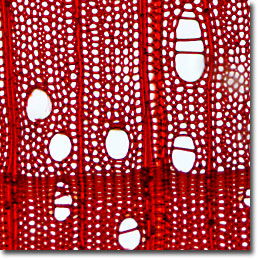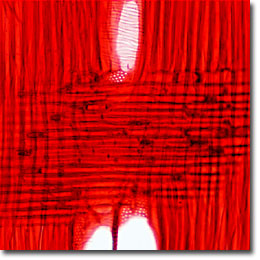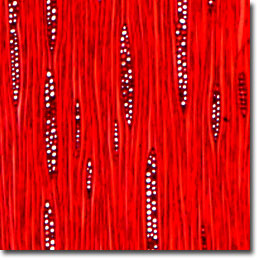The Silver Maple
The Silver Maple (Acer saccharinum; also known as the Soft Maple, Swamp Maple and the Red Maple) is a hardwood tree ranging primarily from eastern Canada, south to Florida, and west to Minnesota and Texas. The sapwood is wide and white in color, while the heartwood is generally light brown with a cast that is gray, green, or purple.

Cross Section

Radial Section

Tangential Section
The maple family (Aceraceae) contains about 150 species, which are native to the northern temperate zones and are mostly deciduous trees or large shrubs. A wide variety of maples are grown for shade and ornamentals due to their attractive foliage that displays a wide array of hues during the fall. Maple trees should be grown in areas that receive at least 30 inches of rainfall per year, and are easily transplanted. A majority of these trees require less than half shade and well-drained soil for optimum growth, but silver maples can tolerate substantial periods of flooding and drought.
The silver maple tree grows to heights of 80 to 100 feet and has a smooth light bark with foliage that turns red in the fall. Propagation is by seed, and the silver maple prefers cool, moist soil with a high water table. The 5-lobed bright green leaves range between three and six inches across and have marginal teeth. Short-stalked flowers lacking petals are borne in clusters and measure about an inch in diameter.
Formerly an important ornamental tree because of its rapid growth, and silver maple is now banned in many communities because of problems with the growth patterns. Mature trees can become quite large and they will break up easily in stormy weather, presenting a damage hazard in cities where the trees are in close proximity to buildings, people, and automobiles. Silver maple wood is used principally for furniture (upholstered frames), boxes, crates, pallets, truck bodies, wall paneling, mill products, furniture, interior grade plywood, and pulpwood.
Microscopic examination of iron-alum hematoxylin and safranin stained thin sections (see the digital images presented above) reveals a diffuse and porous wood having simple perforation plates. Parenchyma is sparse (restricted to occasional cells) and vessels are relatively numerous with inter-vessel pits ranging between 5 and 10 micrometers in diameter and orbicular to broad-oval in shape. Libriform and tracheid fibers are thin to moderately thick walled and medium to coarse in texture. The rays are unstoried, homocellular and 1 to 5 seriate.